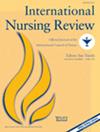Prevalence and associated factor of verbal abuse against nurses: A systematic review
Abstract
Background
Nurses who experience verbal abuse often report negative emotions, which can affect their work status and nurse–patient relationship. However, to the best of our knowledge, no study has summarized the prevalence of verbal abuse among nurses by different perpetrators and related risk factors.
Aim
This review aimed to synthesize the prevalence of verbal abuse among nurses and identify the most common sources and related risk factors.
Methods
PubMed, Web of Science, Embase, and the Cochrane Library electronic databases were searched from inception to 15 October 2024, and observational studies reporting the prevalence of verbal abuse among nurses were selected. In this systematic review, the Preferred Reporting Items for Systematic Reviews and Meta-Analyses guidelines were followed. Methodological quality was appraised using a revised version of the Newcastle-Ottawa Quality Assessment Scale, and the STATA software was used for meta-analysis; PROSPERO registration number: CRD42022385401.
Results
The search identified 458 records, of which 45 met the inclusion criteria. The overall prevalence of verbal abuse was estimated at 67% (95% CI: 61–72). Verbally abused nurses reported patients’ relatives, friends (48%, 95% CI: 42–55), and physicians (39%, 95% CI: 20–58) as the main perpetrators of verbal abuse. Personal factors, work area, and work characteristics were the main factors related to verbal abuse among nurses.
Conclusions
The overall prevalence of verbal abuse among nurses was more than 65%, especially in the emergency department, and South or Southeast Asian countries had a significantly lower prevalence of verbal abuse than other countries. Physicians and patients’ relatives were the main sources of verbal abuse. Hospital administrators should prevent various effects of verbal abuse on nurses’ physical and mental health.
Implications for nursing and health policy
Developing safe workplaces and effective interventions to protect nurses is essential. Supervisors and institutions should thoroughly monitor verbal abuse. Additionally, organizations need to focus on preventive measures and provide the necessary administrative, legal, and psychological support to nurses who are exposed to verbal abuse to ensure nursing care sustainability.

 求助内容:
求助内容: 应助结果提醒方式:
应助结果提醒方式:


